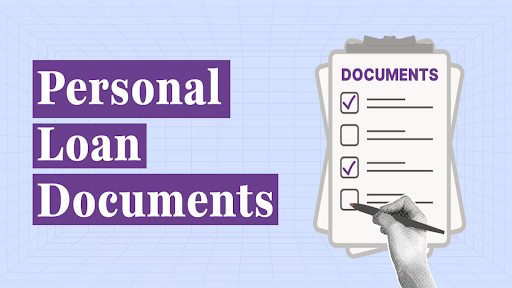In an age where financial flexibility is key, obtaining a personal loan has become more straightforward and accessible than ever. However, ensuring a smooth application process requires careful preparation, especially when it comes to assembling the necessary documentation.
This article delves into the essential personal loan documents you need when applying for a personal loan in India and provides insights on how to streamline your application process effectively.
Understanding Personal Loan Documents
Personal loans are unsecured loans, meaning they do not require collateral. However, to assess your creditworthiness, lenders demand certain personal loan documents. These documents provide evidence of your identity, income, and reliability as a borrower. Ensuring you have all the required documents in place can significantly improve your chances of a quick approval.
Key Personal Loan Documents Required
1. Identity Proof
One of the foundational documents required for a personal loan application is identity proof. Lenders need assurance of your legal identity. Commonly accepted documents include:
– Aadhaar Card: This serves as a universal identity proof with extensive applicability.
– Passport: Especially useful for applicants who might submit additional travel history.
– Voter ID Card: A standard identity proof for Indian citizens.
– Driving License: This comes across as dual purpose, combining identity and address verification.
– PAN Card: While it primarily works for taxation purposes, it also reinforces identity verification.
2. Address Proof
Address proof helps lenders confirm your place of residence. You can provide any of the following:
– Utility Bills (Electricity, Water, Gas): Bills should be recent, typically from the last three months.
– Rental Agreement: If you’re living on rent, the agreement serves as a valid address proof.
– Aadhaar Card: Besides identity, it also serves as an address proof.
– Passport: A versatile document, authenticating both identity and address.
3. Income Proof
Demonstrating regular income is pivotal for a personal loan as it assures the lender of your repayment capacity. Depending on your employment type, you may require:
– Salaried Individuals:
– Salary Slips: Last three to six months’ slips are usually required.
– Bank Statements: Reflecting last six months’ salary credit.
– Form 16: Helps provide an overview of the annual income.
– Self-Employed Individuals:
– Income Tax Returns (ITR): Typically, the last two to three years’ returns.
– Profit and Loss Statement: These statements highlight the income generated from one’s business.
– Balance Sheets: They give a detailed insight into one’s financial status.
4. Age Proof
Establishing your age helps determine your eligibility for the loan term. Common documents include:
– Birth Certificate
– PAN Card
– Passport
– School/College Leaving Certificate
Additional Documents Specific to the Lender
Different financial institutions may have unique requirements aside from the standard personal loan documents. It is always advisable to check with the specific lender regarding any additional documents required. These may include:
– Employment Certificate: Some banks might require proof of employment tenure.
– Business Validity Proof: For self-employed individuals, proof of business operations like a shop establishment certificate may be required.
– Guarantor Form: In certain scenarios, lenders might ask for a guarantor’s details.
Tips for a Smooth Personal Loan Application Process
1. Keep All Documents Updated
Ensure that the documents you are submitting are up-to-date. Expired identification documents or outdated address proofs can unnecessarily delay the process.
2. Verify Document Compatibility
It is crucial to ascertain that the personal loan documents you are providing meet the specific requirements set by the lender. Always refer to the lender’s checklist.
3. Maintain Creditworthiness
While not a document per se, your credit score is a critical non-tangible indicator of your creditworthiness. Make sure to maintain a healthy credit score by clearing existing debts and paying bills on time.
4. Use Online Pre-Verification Tools
Many banks and financial institutions offer online tools wherein applicants can verify document requirements and pre-qualify for loans. This step can save time and align expectations.
Apply for a Personal Loan Easily with the Bajaj Finserv App
The Bajaj Finserv app simplifies the personal loan application process, offering a seamless and hassle-free experience. With its user-friendly interface, you can upload required personal loan documents, check loan eligibility, and track your application status in real time. The app also provides customized loan offers, instant approvals, and flexible repayment options. Additionally, you can access loan calculators, manage EMIs, and explore various financial products effortlessly. By leveraging the app, applicants can reduce paperwork, minimize approval time, and enhance convenience, ensuring a smooth and efficient borrowing experience.
Conclusion
Embarking on the journey of obtaining a personal loan can be simplified by preemptively organizing the required personal loan documents. From identity proof to income verification, ensuring that you have comprehensive documentation will facilitate a smoother, more expedited loan approval process.
Moreover, staying informed of different lenders’ unique document prerequisites and leveraging tools for online verification can greatly streamline the personal loan application procedure. As financial landscapes continue to evolve, being prepared with the right set of documents not only enhances your credibility but accelerates your ability to respond to financial needs efficiently. Thus, thorough documentation remains the cornerstone of any successful personal loan application endeavor in India.

